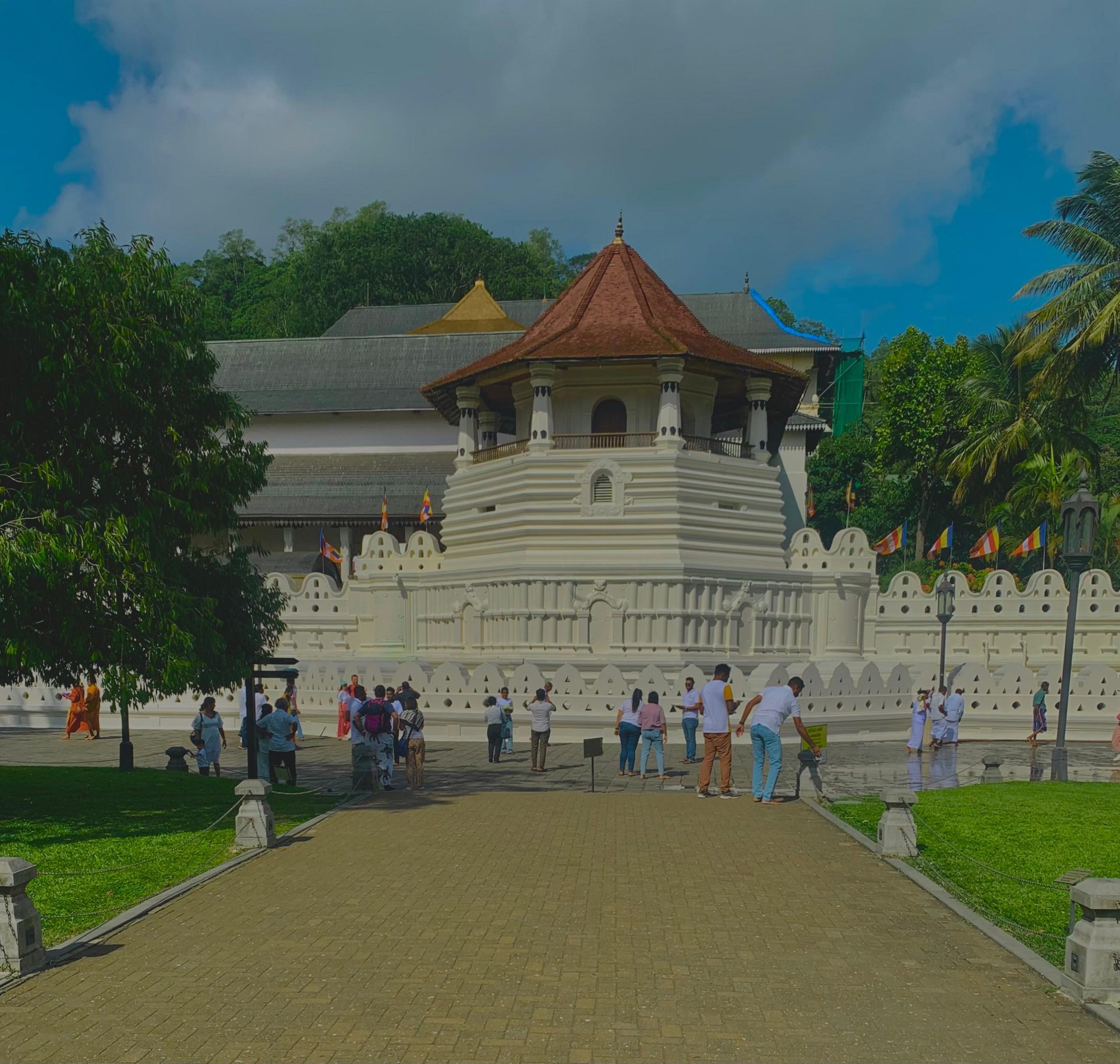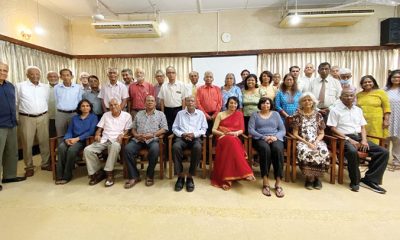Latest News
PNB detect large haul of methamphetamine and heroin in local fishing trawler intercepted by Navy

Acting on credible information, the Sri Lanka Navy launched a special operation on the high seas on 11 Apr 25, resulting in the apprehension of 06 suspects along with a local multi-day fishing trawler, believed to be involved in smuggling of narcotics.
Subsequently, the intercepted trawler was brought to the Dikkowita Harbour, where a thorough inspection was carried out with the assistance of the Police Narcotic Bureau (PNB) experts, leading to the detection of approximately 77kg and 484g of heroin and 42kg and 334g of methamphetamine (Ice).
The consignment, which had been meticulously hidden in the trawler, was handed over to the PNB for onward legal action on 12 Apr.
Latest News
IPL 2025: Mumbai Indian’s bowling tricks on slow pitch get them second straight win

Mumbai Indians (MI) won an important toss, got the best of the conditions, and made excellent use of them to run away to their third win of IPL 2025, beating Sunrisers Hyderabad (SRH) by four wickets. They sent SRH in on an unusually sluggish pitch at the Wankhede Stadium and restricted them to 162 for 5. They then hunted down their target with 11 balls to spare, with a bit of help from dew – though not enough to force a ball change.
MI’s biggest match-winner on the day was Will Jacks, who had made a quiet start to the season, but showed all his value in his sixth match with his new team. His 26-ball 36 was an important innings, but he made an even bigger impact with his offspin, bossing his match-up against SRH’s entirely left-handed top three and finishing with 2 for 14 in three overs.
Jacks’ three overs allowed MI to delay their use of their Impact Player, even though they lost their legspinner Karn Sharma – Player of the Match in their last game against Delhi Capitals – to an injury before he could bowl a ball. Not being forced to bring on a bowler as his replacement allowed MI to sub in Rohit Sharma at the start of their chase, and he gave them impetus with an early cameo. With Ryan Rickelton, Suryakumar Yadav, Tilak Varma and Hardik Pandya also contributing handily, MI never allowed SRH’s bowlers to get a sniff.
For all that, though, this was a match won by MI’s bowlers. Jasprit Bumrah executed best, but their other fast bowlers also played their part in constricting SRH with a plan heavy on slower balls and yorkers on a surface where powering the ball down the ground seemed impossible at times.
This was why SRH only managed to post 162, despite a 59-run opening stand from Abhishek Sharma and Travis Head both of whom enjoyed major slices of luck along the way. That SRH got that far was down to a strong finish, with the 18th and 20th overs bringing 21 and 22 runs respectively as Heinrich Klassen, Aniket Verma and Pat Cummins hit the only five sixes of their innings.
The first over of the match was an ominous one for MI. Deepak Chahar found Abhishek’s edge first ball only for the overhead chance to burst through Jacks’ hands at slip. Then Head flicked uppishly only for the ball to fall short of the diving Karn at midwicket.
The latter event happened in the third over as well, this time off Abhishek’s bat, and this time Karn’s futile dive also gave him a split webbing. He left the field and didn’t return to bowl.
Fortune smiled on SRH again in the 10th over, when Head was caught on the square-leg boundary off a no-ball from Hardik. But the bigger story was that Head was batting on 24 off 24 at that point, struggling to time the ball on a pitch where the ball simply wouldn’t come on to the bat. Abhishek had looked a little more fluent, scoring 40 off 27 before being caught on the point boundary off Hardik in the eighth over.
That wicket had come right after another ominous moment for MI, when Hardik had pulled up in his follow-through with what seemed like an injury to his left shin or ankle. He even seemed to gesture to his dugout to call for a substitute, but in the end he dusted himself off and continued bowling.
SRH only scored 46 in the powerplay despite not losing a wicket, and while the slow, grippy conditions played their part, MI’s bowlers also used them beautifully, with Bumrah standing out, giving away just 10 runs in his two powerplay overs.
MI brought on Jacks as soon as the powerplay ended, and he immediately began finding grip and turn. After Hardik had broken the opening stand in the eighth over, Jacks struck his first blow in the ninth, turning an offbreak sharply past the flailing bat of the charging Ishan Kishan to have him stumped.
Then, changing ends to bowl the 12th over, Jacks ended Head’s miserable stay, having him caught at long-off for 28 off 29 balls.
Head’s dismissal – a failure to clear the straight boundary – was a theme of SRH’s innings, with all their batters struggling for power down the ground. Only four fours came from the eighth to the 15th overs, and all four were hit behind the wicket. Klaasen and Nitish Kumar Reddy batted through most of this period, putting on 31 off 33 balls.
A three-run 17th over from Trent Boult, which included the wicket of Reddy, caught at long-on, left SRH 115 for 4 with 140 looking a fair distance away.
But they managed to collect 47 off the last three, with Klaasen, Aniket and Cummins finally ending their sixes drought. Two of the five sixes involved exquisite skill from Klaasen and Aniket over the covers, but three came off hittable full-tosses. There were seven full-tosses in all in the last three overs, suggesting that dew may have already started setting in.
One of those full-tosses, however, came from Bumrah, who bowls the most unhittable full-tosses in world cricket, and bowled Klaasen as he attempted to make room. His 19th only went for four runs, sandwiched between expensive overs from Deepak Chahar and Hardik.
Impact sub Rohit took his chances early on, enjoyed a bit of luck, including an edged six over deep third, and hit a couple of trademark pulled sixes off his hip to give MI early impetus. Rickelton struggled early on, got going with three successive fours off Eshan Malinga and enjoyed a strange stroke of luck when he was caught in the covers off Zeeshan Ansari only for an umpire’s review to confirm a no-ball – for keeper Klaasen’s gloves encroaching in front of the stumps before the batter had hit the ball. But Rickelton was out soon after, miscuing a Harshal Patel slower ball to backward point.
Between them, though, the openers had shaved 57 runs off MI’s target.
Then Jacks and Suryakumar combined for the decisive partnership of the match, putting on 52 for the third wicket in just 29 balls. They hit four sixes and a four in three overs from legspinners Ansari and Rahul Chahar – who came on as Impact Sub, replacing Mohammed Shami who still had an over of his quota remaining – who were still finding grip off this surface but ever so often erred in line or length.
By the time Cummins broke this stand, MI needed 42 at less than a run a ball. Hardik hurried them towards victory, hitting a six and three fours – including a glorious back-foot punch through wide long-on off Cummins – and they finally got home at the start of the 19th over, after a bizarre 18th that brought Malinga two wickets for just one run.
Brief scores:
Mumbai Indians 166 for 6 in 18.1 overs (Will Jacks 36, Ryan Rickelton 31,Rohit Sharma 26, Surykumar Yadav 26, Tilak Varma 21*, Hardik Pandya 21; Pat Cummins 3-26, Eshan Malinga 2-36, Harshal Patel 1-31) beat Sunrisers Hyderabad 162 for 5 in 20 overs (Abhishek Sharma 40, Travis Head 28, Nitish Kumar Reddy 19, Heirich Klaasen 37, Aniket Verma 18*; Will Jacks 2-14, Trent Boult 1-29, Jasprit Bumrah 1-21, Hardik Pandya 1-42) by four wickets
[Cricinfo]
Latest News
“Siri Dalada Vandanawa” commence today [18]

The ‘Siri Dalada Vandanawa’, a special exposition of the Sacred Tooth Relic, will commence today (18) at 12:30 noon, after 16 years.
President Anura Kumara Disanayake is scheduled to participate in the inauguration ceremony.
Additionally, a number of foreign diplomats are expected to participate in this event. Special arrangements have been made for them to travel from Colombo to Kandy via a dedicated train service.
At the request of the President, the ‘Siri Dalada Vandanawa’ will be held under the guidance of the Chief Prelates of the Malwathu and Asgiri Chapters, and under the direction of the Diyawadana Nilame of the historic Temple of the Sacred Tooth Relic in Kandy. The exposition will continue until April 27.
On the opening day, the public will have the opportunity to pay homage to the Sacred Tooth Relic from 3:00 p.m. to 5:00 p.m. and from 12:00 p.m. to 5:00 p.m.until the 27th of April.
Latest News
Scientists find ‘strongest evidence yet’ of life on distant planet

Scientists have found new but tentative evidence that a faraway world orbiting another star may be home to life.
A Cambridge team studying the atmosphere of a planet called K2-18b has detected signs of molecules which on Earth are only produced by simple organisms.
This is the second, and more promising, time chemicals associated with life have been detected in the planet’s atmosphere by Nasa’s James Webb Space Telescope (JWST).
But the team and independent astronomers stress that more data is needed to confirm these results.
The lead researcher, Prof Nikku Madhusudhan, speaking at his lab at Cambridge University’s Institute of Astronomy said that he hopes to obtain the clinching evidence soon.
“This is the strongest evidence yet there is possibly life out there. I can realistically say that we can confirm this signal within one to two years.”
K2-18b is two-and-a-half times the size of Earth and is 700 trillion miles, or 124 light years, away from us – a distance far beyond what any human could travel in a lifetime.
JWST is so powerful that it can analyse the chemical composition of the planet’s atmosphere from the light that passes through from the small red Sun it orbits.
The Cambridge group has found that the atmosphere seems to contain the chemical signature of at least one of two molecules that are associated with life: dimethyl sulphide (DMS) and dimethyl disulphide (DMDS). On Earth, these gases are produced by marine phytoplankton and bacteria.
Prof Madhusudhan said he was surprised by how much gas was apparently detected during a single observation window. “The amount we estimate of this gas in the atmosphere is thousands of times higher than what we have on Earth,” he said. “So, if the association with life is real, then this planet will be teeming with life,” he added.
Prof Madhusudhan went further: “If we confirm that there is life on K2-18b, it should basically confirm that life is very common in the galaxy.”
He told BBC Radio 5Live on Thursday: “This is a very important moment in science, but also very important to us as a species. “If there is one example, and the universe being infinite, there is a chance for life on many more planets.”
Dr Subir Sarkar, a lecturer in astrophysics at Cardiff University and part of the research team, said the research suggests K2-18b could have an ocean which could be potentially full of life – though he cautioned scientists “don’t know for sure”.
He added that the research team’s work will continue to focus on looking for life on other planets: “Keep watching this space.”
There are lots of “ifs” and “buts” at this stage, as Prof Madhusudhan’s team freely admits.
Firstly, this latest detection is not at the standard required to claim a discovery.
For that, the researchers need to be about 99.99999% sure that their results are correct and not a fluke reading. In scientific jargon, that is a five sigma result.
These latest results are only three sigma, or 99.7%. Which sounds like a lot, but it is not enough to convince the scientific community. However it is much more than the one sigma result 0f 68% the team obtained 18 months ago. which was greeted with much skepticism at the time.
But even if the Cambridge team obtains a five sigma result, that won’t be conclusive proof that life exists on the planet, according to Prof Catherine Heymans of Edinburgh University and Scotland’s Astronomer Royal, who is independent of the research team.
“Even with that certainty, there is still the question of what is the origin of this gas,” she told BBC News.
“On Earth it is produced by microorganisms in the ocean, but even with perfect data we can’t say for sure that this is of a biological origin on an alien world because loads of strange things happen in the Universe and we don’t know what other geological activity could be happening on this planet that might produce the molecules.”
That view is one the Cambridge team agree with. They are working with other groups to see if DMS and DMDS can be produced by non-living means in the lab.
“There is still a 0.3% chance that it might be a statistical fluke,” Prof Madhusudhan said.
Suggesting life may exist on another planet was “a big claim if true”, he told BBC Radio 4’s Today programme, adding: “So we want to be really, really thorough, and make more observations, and get the evidence to the level that there is less than a one-in-a-million chance of it being a fluke.”
He said this should be possible in “maybe one or two years”.
Other research groups have put forward alternative, lifeless, explanations for the data obtained from K2-18b. There is a strong scientific debate not only about whether DMS and DMDS are present but also the planet’s composition.
The reason many researchers infer that the planet has a vast liquid ocean is the absence of the gas ammonia in K2-18b’s atmosphere. Their theory is that the ammonia is absorbed by a vast body of water below.
But it could equally be explained by an ocean of molten rock, which would preclude life, according to Prof Oliver Shorttle of Cambridge University.
“Everything we know about planets orbiting other stars comes from the tiny amounts of light that glance off their atmospheres. So it is an incredibly tenuous signal that we are having to read, not only for signs of life, but everything else,” he said.
“With K2-18b part of the scientific debate is still about the structure of the planet.”
Dr Nicolas Wogan at Nasa’s Ames Research Center has yet another interpretation of the data. He published research suggesting that K2-18b is a mini gas giant with no surface.
Both these alternative interpretations have also been challenged by other groups on the grounds that they are inconsistent with the data from JWST, compounding the strong scientific debate surrounding K2-18b.
Prof Chris Lintott, presenter of the BBC’s The Sky at Night, said he had “great admiration” for Prof Madhusudhan’s team, but was treating the research with caution.
“I think we’ve got to be very careful about claiming that this is ‘a moment’ on the search to life. We’ve [had] such moments before,” he told Today.
He said the research should be seen instead as “part of a huge effort to try and understand what’s out there in the cosmos”.
Prof Madhusudhan acknowledges that there is still a scientific mountain to climb if he is to answer one of the biggest questions in science. But he believes he and his team are on the right track.
“Decades from now, we may look back at this point in time and recognise it was when the living universe came within reach,” he said.
“This could be the tipping point, where suddenly the fundamental question of whether we’re alone in the universe is one we’re capable of answering.”
The research has been published in The Astrophysical Journal Letters.

[BBC]
-

 News6 days ago
News6 days agoSuspect injured in police shooting hospitalised
-

 Business6 days ago
Business6 days agoSanjiv Hulugalle appointed CEO and General Manager of Cinnamon Life at City of Dreams Sri Lanka
-

 Business5 days ago
Business5 days agoMembers’ Night of the Sri Lanka – Russia Business Council of The Ceylon Chamber of Commerce
-

 Features5 days ago
Features5 days agoLiberation Day tariffs chaos could cause permanent damage to US economy, amid global tensions
-

 Features5 days ago
Features5 days agoMinds and Memories picturing 65 years of Sri Lankan Politics and Society
-

 News6 days ago
News6 days agoLankan security forces Humanitarian Assistance and Relief Team working in Myanmar
-

 Business6 days ago
Business6 days agoMembers’ Night of the Sri Lanka – Russia Business Council of the Ceylon Chamber of Commerce
-

 Sports5 days ago
Sports5 days agoLankan legends, Modi and the Jaffna dream












